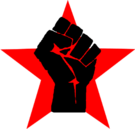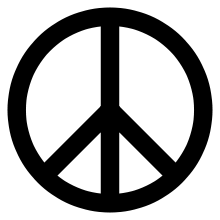Black Power Revolution
| Black Power Revolution | |
|---|---|
| Part of Black Power | |
| Date | 1968 - 1970 |
| Location | Trinidad and Tobago |
| Methods | Demonstrations, Striking, Mutiny |
| Part of racial and political series on |
| Black Power |
|---|
 |
|
History |
|
Organizations
|
|
The Black Power Revolution, also known as the "Black Power Movement", 1970 Revolution, Black Power Uprising and February Revolution, was an attempt by a number of social elements, people and interest groups in Trinidad and Tobago to force socio-political change.
History
Between 1968 and 1970 the movement gained strength in Trinidad and Tobago and was greatly influenced by the Civil Rights Movement in the United States during the 1960s. The National Joint Action Committee was formed out of the Guild of Undergraduates at the St. Augustine Campus of the University of the West Indies. Under the leadership of Geddes Granger (now Makandal Daaga), NJAC and the Black Power movement appeared as a serious challenge to Prime Minister Eric Williams' authority.
This was coupled with a growing militancy by the Trade Union movement, led by George Weekes of the Oilfields Workers' Trade Union, Clive Nunez of the Transport and Industrial Workers Union and Basdeo Panday, then a young trade union lawyer and activist. The Black Power Revolution began with a 1970 Carnival band named Pinetoppers whose presentation entitled The Truth about Africa included portrayals of "revolutionary heroes" including Fidel Castro, Stokely Carmichael and Tubal Uriah Butler.
This was followed by a series of marches and protests. Williams countered with a broadcast entitled I am for Black Power. He introduced a 5% levy to fund unemployment reduction and later established the first locally owned commercial bank. However, this intervention had little impact on the protests
Leadership
 |
|---|
| Social unrest in Trinidad and Tobago |
| Spanish Trinidad (pre-1797) |
| Arena Massacre |
| British Colonization |
| Hosay Massacre - Canboulay Riots 1903 water riots - Labour riots of 1937 |
| Post-independence (from 1962) |
| Black Power Revolution Jamaat al Muslimeen coup attempt |
It was mainly led by NJAC's duo of Makandal Daaga and Khafra Khambon in tandem with other various interests within the trade unions, and other social groups like Afro-Trinidadians and were noted to attract many disaffected members of the then ruling PNM under Eric Williams. A large turnout of the disaffected poor of the cities and towns, as well as those black youth of the disaffected communities were attracted to the uprising were present in the movement, as well as youths and others from the UWI, St. Augustine campus..
Escalation
On April 6, 1970 a protester, Basil Davis, was killed by the police. This was followed on April 13 by the resignation of A.N.R. Robinson, Member of Parliament for Tobago East. The death of this protester led to the Movement to pick up momentum. On April 18 sugar workers went on strike, and there was talk of a general strike. In response to this, Williams proclaimed a State of Emergency on April 21 and arrested 15 Black Power leaders. Responding in turn, a portion of the Trinidad Defense Force, led by Raffique Shah and Rex Lassalle, mutinied and took hostages at the army barracks at Teteron. Through the action of the Coast Guard, including Officer Hugh Griffith and negotiations between the Government and the rebels, the mutiny was contained and the mutineers surrendered on April 25.
Williams made three additional speeches in which he sought to identify himself with the aims of the Black Power movement. He re-shuffled his Cabinet and removed three Ministers (including two white members) and three senators. He also introduced the Public Order Act which reduced civil liberties in an effort to control protest marches. After public opposition, led by A.N.R. Robinson and his newly created Action Committee of Democratic Citizens (which later became the Democratic Action Congress), the Bill was withdrawn. Attorney General Karl Hudson-Phillips offered to resign over the failure of the Bill, but Williams refused his resignation.
Notes and references
- De Roaring 70s:An Introduction to the Politics of the 1970s - Zeno Obi Constance;
- Radical Caribbean: From Black Power to Abu Bakr - Brian Meeks;
- The Black Power Revolution 1970: A Retrospective - Selwyn Ryan & Taimion Stewart (eds.);
- "Background to the 1970 Confrontation" in Contemporary Caribbean - Susan Craig;
- The Deosaran Files: Two Decades of Social and Political Commentary (1971- 1991); Volume 2: Race, Politics and Democracy - Ian K Ramdhanie & Vidya Lall (eds.);
- Identity, Ethnicity and Culture in the Caribbean - Ralph Premdas (ed.);
- Modern Political Culture in the Caribbean - Holger Henke & Fred Reno (eds.);
- General History of the Caribbean: The Caribbean in the Twentieth Century; Volume V - Bridget Brereton;
- Reflections of a Soldier: A Memoir of 1970 and Events Before and After - Clement Burkett.
Various internet sources are also available on this topic.
See also
External links
- The M and S Collection at the Library of Congress contains some materials from the Black Power Movement.
